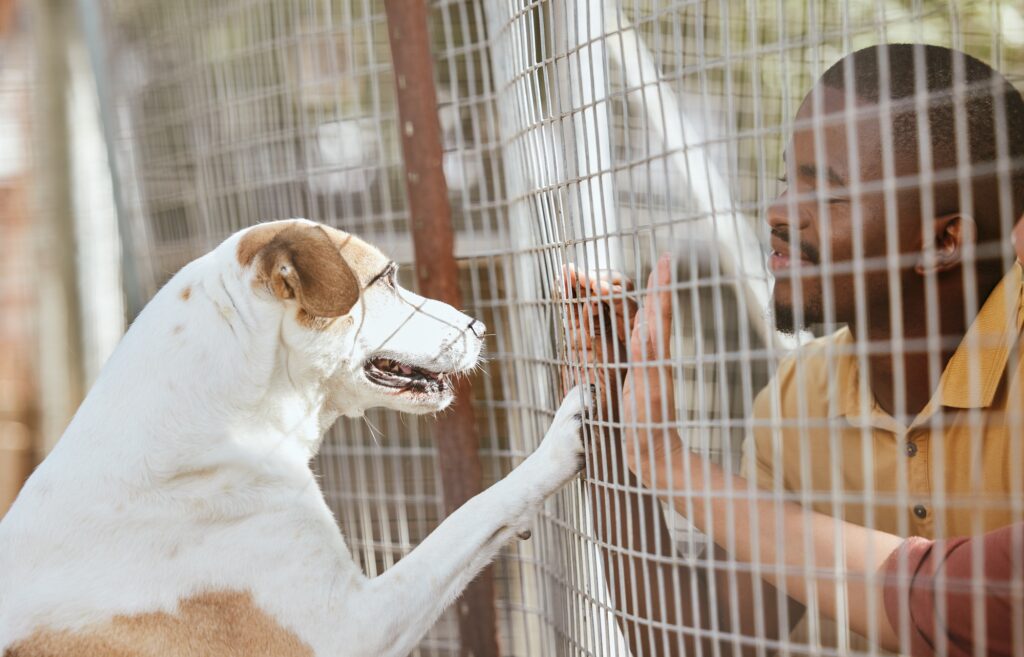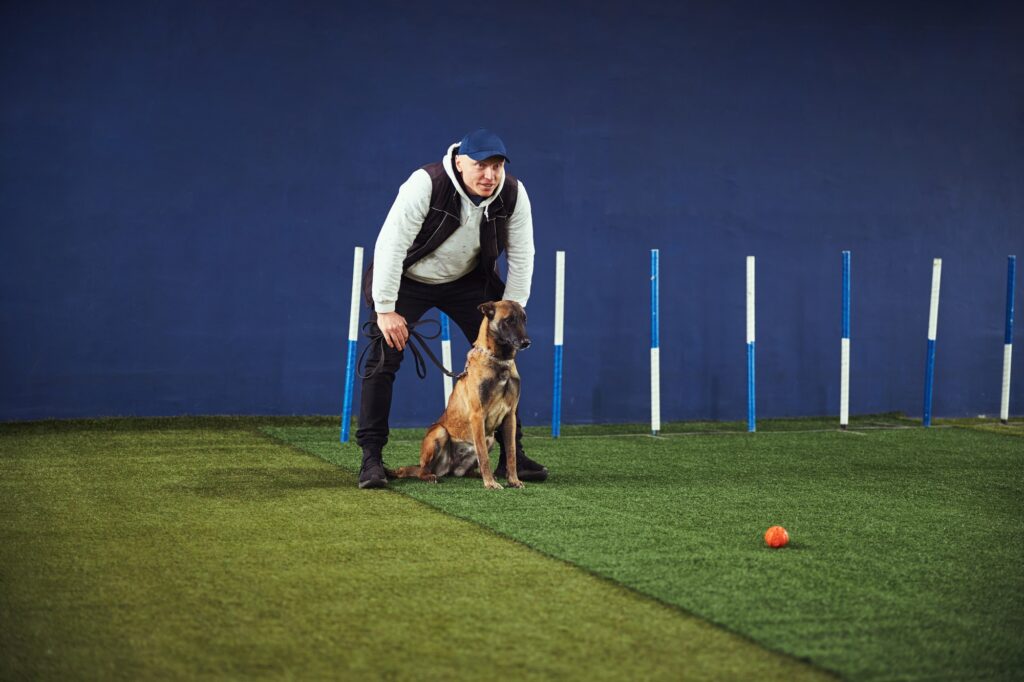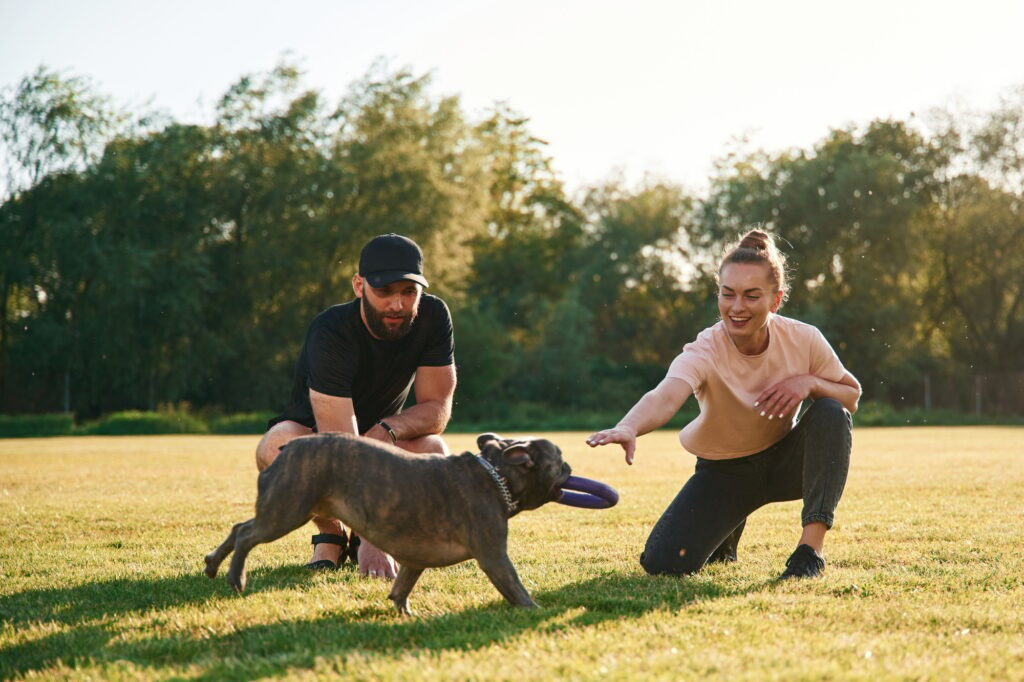Fostering a dog is one of the most rewarding ways to make a real difference in animal welfare. When you become a foster parent to a dog, you provide a temporary safe haven that bridges the gap between shelter life and a forever home. This crucial role helps reduce overcrowding in shelters, gives dogs individual attention they desperately need, and provides them with a nurturing environment where they can heal, learn, and grow.
Foster families are the unsung heroes of animal rescue, taking on the vital responsibility of preparing dogs for their future permanent homes. By opening their hearts and homes, foster parents help assess a dog’s true personality outside the stressful shelter environment, work on basic training and socialization, and provide invaluable insights that help match each dog with the perfect forever family. Whether it’s caring for pregnant mothers, nursing puppies back to health, or simply showing an abandoned dog that humans can be trusted again, foster families play an indispensable role in saving lives and creating success stories.
The impact of fostering extends far beyond helping just one dog – each fostered pet creates space in a shelter for another animal in need, effectively doubling the number of lives saved. This ripple effect makes foster families an essential component of the animal welfare system, working alongside shelters and rescue organizations to give countless dogs a second chance at happiness.
The Application Process
The application process to become a foster parent requires careful preparation and attention to detail. Rescue organizations take their responsibility seriously and have thorough screening procedures to ensure the best possible outcomes for their dogs. While the specific requirements may vary between organizations, understanding the general application process will help you present yourself as a committed and capable foster candidate. Be prepared to invest time in completing detailed applications, providing references, and participating in interviews and home checks. This comprehensive evaluation process helps organizations match the right dogs with the right foster families, setting everyone up for success.
Find a Reputable Rescue Organization
Finding a reputable rescue organization is the crucial first step in your fostering journey. Start by researching local animal welfare organizations through online searches, social media, and community recommendations. Look for organizations that are registered non-profits, maintain transparent operations, and have established protocols for their foster programs. Legitimate rescues should have clear communication channels, organized leadership structures, and comprehensive support systems for their foster families. Pay attention to reviews, testimonials, and their track record in the community. A reputable organization will be forthcoming about its policies, expectations, and the level of support it provides to foster families. They should also demonstrate a commitment to proper veterinary care, responsible adoption practices, and the overall well-being of their animals.
Complete Applications to Foster
The application process for fostering typically involves filling out detailed forms that cover various aspects of your lifestyle, experience with pets, and living situations. You’ll need to provide personal information, references, and details about your home environment. Many organizations require information about your current pets, their vaccination status, and your veterinarian’s contact information. The application may also ask about your work schedule, daily routine, and any specific preferences or limitations regarding the types of dogs you can foster. Be prepared to answer questions about how you would handle various situations, from medical emergencies to behavioral challenges. While the paperwork might seem extensive, it’s designed to ensure the best possible match between foster families and dogs in need.
Prepare for Home Checks and Interviews

Home checks and interviews are essential steps in the fostering approval process. Schedule your home check when all family members can be present, as this allows the organization to observe family dynamics and assess everyone’s commitment. Before the visit, ensure your home is clean, safe, and already prepared with basic pet-proofing measures.
During the interview, be ready to discuss your daily schedule, your experience with animals, and how you plan to handle various scenarios. The organization may ask about specific situations like emergency protocols or your strategy for introducing a foster dog to existing pets. Be honest about your limitations and concerns – this helps the organization make appropriate matches. Remember that these evaluations are opportunities to demonstrate your preparedness and ask questions about the fostering experience.
Learn if There are Any Training Requirements
Many rescue organizations require foster parents to complete specific training programs before taking in a foster dog. These training sessions can range from basic orientation meetings to comprehensive workshops covering topics like dog body language, positive reinforcement techniques, and emergency protocols. Some organizations offer online training modules that can be completed at your own pace, while others require in-person sessions with experienced trainers. The training requirements often depend on the types of dogs you plan to foster – for instance, working with behavioral cases or medical needs dogs might require additional specialized training. Even if formal training isn’t mandatory, most organizations provide educational resources and ongoing support to help foster parents succeed. Being proactive about learning and staying informed about best practices in dog care and training will make you a more effective foster parent.
Prerequisites for Fostering a Dog
Before diving into the rewarding journey of fostering a dog, it’s important to understand that rescue organizations and shelters have specific requirements that potential foster families must meet. These prerequisites aren’t designed to create barriers, but rather to ensure the safety and well-being of both the foster dog and the household. Organizations take their responsibility seriously and carefully screen potential foster families to create successful matches that benefit everyone involved. While the exact requirements may vary between organizations, there are several universal prerequisites that most foster programs expect candidates to fulfill.
Requirements of Your Home
Your home environment must meet several key requirements to be considered suitable for fostering a dog. First and foremost, you need a secure, fenced yard or a safe area for exercise, though specific size requirements vary depending on the size and energy level of the dogs you plan to foster. Your living space should be pet-proofed, with secure windows and doors, and free from hazardous items or toxic plants. If you’re renting, you’ll need written permission from your landlord confirming that pets are allowed on the property. Additionally, your home should have a designated quiet space or room where the foster dog can decompress and feel safe, especially during their initial adjustment period. Many organizations also require that your existing fence meets minimum height requirements (typically 4-6 feet) and is in good condition without gaps or loose boards that could allow escape. Some programs may also evaluate your home’s proximity to busy roads or potential hazards that could impact the dog’s safety.
Time Considerations
Fostering a dog requires a significant time commitment that potential foster families must carefully consider. Most organizations expect foster parents to dedicate several hours each day to their foster dog’s care, including feeding, exercise, training, and socialization. This commitment typically involves morning and evening walks, playtime, training sessions, and monitoring the dog’s behavior and health. Additionally, foster families need to be available for scheduled veterinary appointments, which may occur during business hours. Some dogs, particularly those with medical needs, behavioral challenges, or young puppies, may require even more intensive time investments. Foster parents who work full-time should have a reliable plan for mid-day checks or walks, either through family members, trusted neighbors, or professional pet sitters. The length of the fostering commitment can vary significantly, from a few weeks to several months, depending on the dog’s needs and how quickly they find their forever home.
Preparing Your Family and Household
Before fostering a dog, it’s crucial to prepare both your physical space and your family members for the new arrival. Every member of the household should be on board with the fostering commitment and understand their roles in caring for the dog. This includes establishing clear rules about feeding, walking schedules, and who will handle specific responsibilities. Children need to be taught how to properly interact with the foster dog, respecting its space and understanding that the dog may be nervous or uncertain in its new environment. It’s also important to set up proper boundaries and establish designated areas where the foster dog can eat, sleep, and have quiet time. If you have existing pets, you’ll need to plan for proper introductions and possibly create separate spaces initially to ensure a smooth transition. Consider setting up baby gates or other barriers to create safe zones, and remove or secure any items that could be dangerous for the dog, such as toxic houseplants, accessible trash bins, or loose electrical cords.
Basic Supplies for the Dog
Having the right supplies ready before your foster dog arrives is essential for a smooth transition. Basic necessities include food and water bowls, a properly-sized collar with ID tags, a sturdy leash, and appropriate food (usually provided or specified by the rescue organization). You’ll need a comfortable bed or crate to give your foster dog a safe space of their own, along with washable blankets and towels.

Essential grooming supplies such as brushes, pet-friendly shampoo, and nail clippers should be on hand. Stock up on cleanup supplies including enzymatic cleaners for accidents, poop bags, and paper towels. Enrichment items like appropriate chew toys, interactive puzzles, and durable play toys help keep your foster dog mentally stimulated and physically active. Some organizations provide basic supplies, while others require foster families to furnish their own – be sure to clarify this with your rescue organization before bringing your foster dog home.
Understanding Your Responsibilities When Fostering a Dog
When you commit to fostering a dog, you’re taking on a comprehensive set of responsibilities that go far beyond providing food and shelter. As a foster parent, you become an essential part of the dog’s journey toward finding their forever home, serving as both caregiver and advocate. Understanding these responsibilities is crucial for success in your fostering journey and ensures the best possible outcome for your foster dog. From maintaining daily routines to monitoring health concerns, providing behavioral support, and keeping detailed records, each aspect of fostering plays a vital role in the dog’s rehabilitation and eventual adoption.
Daily Care Duties
Daily care duties form the foundation of fostering a dog and require consistent attention to establish routines that make your foster dog feel secure and well-cared for. These responsibilities include regular feeding schedules (typically 2-3 times per day), ensuring fresh water is always available, and maintaining a consistent schedule for bathroom breaks and exercise. Foster parents must provide appropriate physical activity through daily walks, playtime, and mental stimulation exercises. Regular grooming tasks such as brushing, cleaning ears, and maintaining hygiene are also essential components of daily care. Additionally, foster parents need to monitor their dog’s eating habits, bathroom patterns, and general well-being, noting any concerning changes that might require veterinary attention. Creating and sticking to these daily routines helps foster dogs develop stability and confidence in their temporary home while learning basic household manners that will serve them well in their future forever homes.
Medical Care and Vet Visits
When fostering a dog, one of the most important responsibilities is overseeing the animal’s medical care and wellness needs. Foster parents must ensure their dogs receive all necessary vaccinations, preventative medications (such as flea, tick, and heartworm treatments), and any prescribed medications for existing conditions. Regular veterinary check-ups are typically scheduled through the rescue organization, and foster parents are responsible for transporting their dogs to these appointments. Foster families must also monitor their dogs for any signs of illness or distress, including changes in appetite, energy levels, bathroom habits, or behavior. In emergency situations, foster parents should know the organization’s protocol for seeking immediate veterinary care and have quick access to emergency contact numbers. Most rescue organizations cover approved medical expenses, but foster parents must follow specific procedures for obtaining authorization for treatments and maintaining detailed records of all medical care provided.
Behavioral Training and Socialization

As a foster parent, you play a crucial role in providing essential behavioral training and socialization that will help your foster dog become a well-adjusted companion. This responsibility includes teaching basic obedience commands, house training if needed, and addressing specific behavioral challenges such as leash pulling, resource guarding, or separation anxiety.
Socialization involves carefully introducing your foster dog to new experiences, people, and other animals in controlled, positive environments. You’ll need to help them develop good manners around visitors, learn appropriate play behaviors, and build confidence in various situations. Many rescue organizations provide training guidelines and support, but foster parents must consistently reinforce these lessons through daily interactions and structured training sessions. This training and socialization work is vital as it significantly increases the dog’s adoptability and helps ensure their success in their future forever home.
Documentation and Progress Reports
Maintaining detailed documentation and providing regular progress reports is a crucial responsibility when fostering a dog. Most rescue organizations require foster parents to keep thorough records of their foster dog’s daily activities, behavioral changes, and medical developments. This typically includes tracking eating habits, exercise routines, training progress, and any concerning behaviors or health issues. Foster parents are usually expected to submit regular updates, often weekly or bi-weekly, through specified channels such as email, apps, or online forms. These reports help the organization monitor the dog’s development, update adoption profiles accurately, and make informed decisions about potential adopters. Photos and videos of the foster dog are also valuable components of documentation, as they help showcase the dog’s personality and progress to potential adopters. Good record-keeping not only helps the organization but also ensures continuity of care if the dog needs to transition to another foster home.
Common Challenges and Solutions When Fostering a Dog
While fostering a dog can be incredibly rewarding, it’s important to be prepared for various challenges that may arise during your fostering journey. These challenges are normal parts of the fostering experience and can be effectively managed with proper preparation, support from your rescue organization, and a patient, understanding approach. Most foster parents encounter some combination of these common challenges, but the satisfaction of helping a dog transition to their forever home makes working through these difficulties worthwhile. Understanding these potential hurdles in advance can help you develop strategies to address them effectively and create a more positive experience for both you and your foster dog.
Adjustment period difficulties
The adjustment period when fostering a dog home can present various challenges that require patience and understanding. Many dogs need time to decompress and adapt to their new environment, which can take anywhere from a few days to several weeks. During this time, foster dogs may exhibit stress-related behaviors such as reduced appetite, anxiety, withdrawal, or excessive attachment. Some dogs might be hesitant to explore their new surroundings, while others might test boundaries as they become more comfortable. It’s essential to maintain consistent routines and provide a calm, structured environment during this transition period. Creating a quiet, safe space where the dog can retreat when feeling overwhelmed can help ease their adjustment. Remember that each dog adapts at their own pace, and what might be challenging in the first few days often improves significantly as the dog begins to feel secure in their foster home.
Behavioral issues
When you’re fostering a dog, they may exhibit various behavioral challenges that require patient and consistent training to address. Common issues include resource guarding, separation anxiety, leash reactivity, or challenges with house training. Some dogs might display fearful or defensive behaviors around certain triggers, while others might struggle with basic commands or boundaries. These behaviors often stem from past experiences or lack of proper training. It’s important to work closely with your rescue organization to develop appropriate training strategies, as they can provide guidance specific to your foster dog’s needs. Many behavioral issues can be improved through positive reinforcement training, consistent routines, and gradual confidence building. Sometimes, professional behavioral support may be recommended for more complex cases. Remember that progress takes time, and celebrating small improvements helps maintain motivation throughout the training process.
Time management
Managing time effectively is one of the most significant challenges when fostering a dog, particularly when balancing work, family commitments, and foster dog responsibilities. Foster dogs require consistent feeding schedules, regular exercise, training sessions, and veterinary appointments that must be coordinated with existing daily routines.

Creating a detailed schedule that includes dedicated time slots for dog care activities helps maintain structure and ensures all needs are met. It’s crucial to build flexibility for unexpected situations, such as emergency vet visits or extended training sessions. Many successful foster parents find that involving family members in care duties, setting up a support network of fellow foster parents or pet sitters, and utilizing tools like calendar apps or scheduling software can help streamline their time management. Some organizations also offer temporary relief fostering for occasions when primary foster parents need a short break or have unavoidable commitments.
Emotional attachment
Forming emotional attachments to foster dogs is a natural and common challenge that many foster parents face. These bonds develop through the daily care, training, and nurturing provided to help these dogs heal and grow. While the emotional connection can make saying goodbye difficult when the dog finds their forever home, it’s important to remember that these feelings are a sign of successful fostering – you’ve provided the love and stability the dog needed to become adoptable. Foster parents can manage these emotions by focusing on the positive impact they’re making, celebrating successful adoptions, and maintaining perspective about their vital role in the rescue process. Many foster parents find that staying in touch with adopters (when permitted by the organization) and seeing their former foster dogs thriving in their new homes helps ease the transition. Remember that making room for another dog in need is one of the most rewarding aspects of fostering, even though saying goodbye is never easy.
Experience the Magic of Fostering a Dog
Fostering a dog is more than just providing temporary shelter – it’s a transformative journey that saves lives and creates second chances. Each time you open your home to a foster dog, you’re not just offering them a safe space to rest; you’re giving them the opportunity to learn trust, experience love, and develop the skills they need to thrive in their forever home. The impact of fostering reverberates far beyond individual dogs – it creates space in shelters for other animals in need, helps organizations understand dogs’ true personalities in home environments, and ultimately increases their chances of successful adoption. While the commitment requires time, patience, and emotional investment, the rewards of seeing a once-fearful or struggling dog blossom into a confident, happy companion make it all worthwhile. Whether you’re considering becoming a foster parent or looking to expand your fostering journey, remember that every dog you help is one more success story in the making. By fostering, you become part of a compassionate community dedicated to giving dogs the bright futures they deserve.
